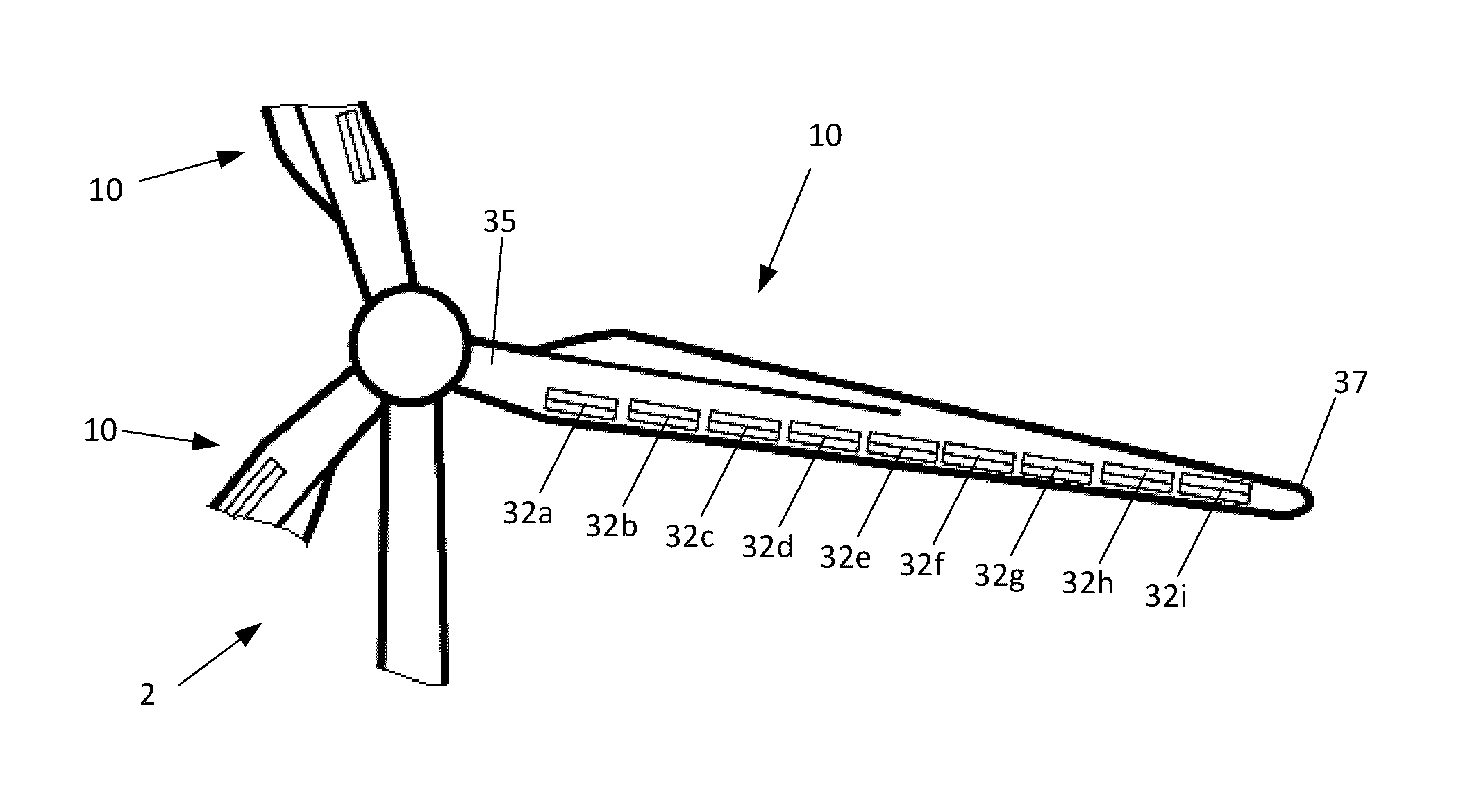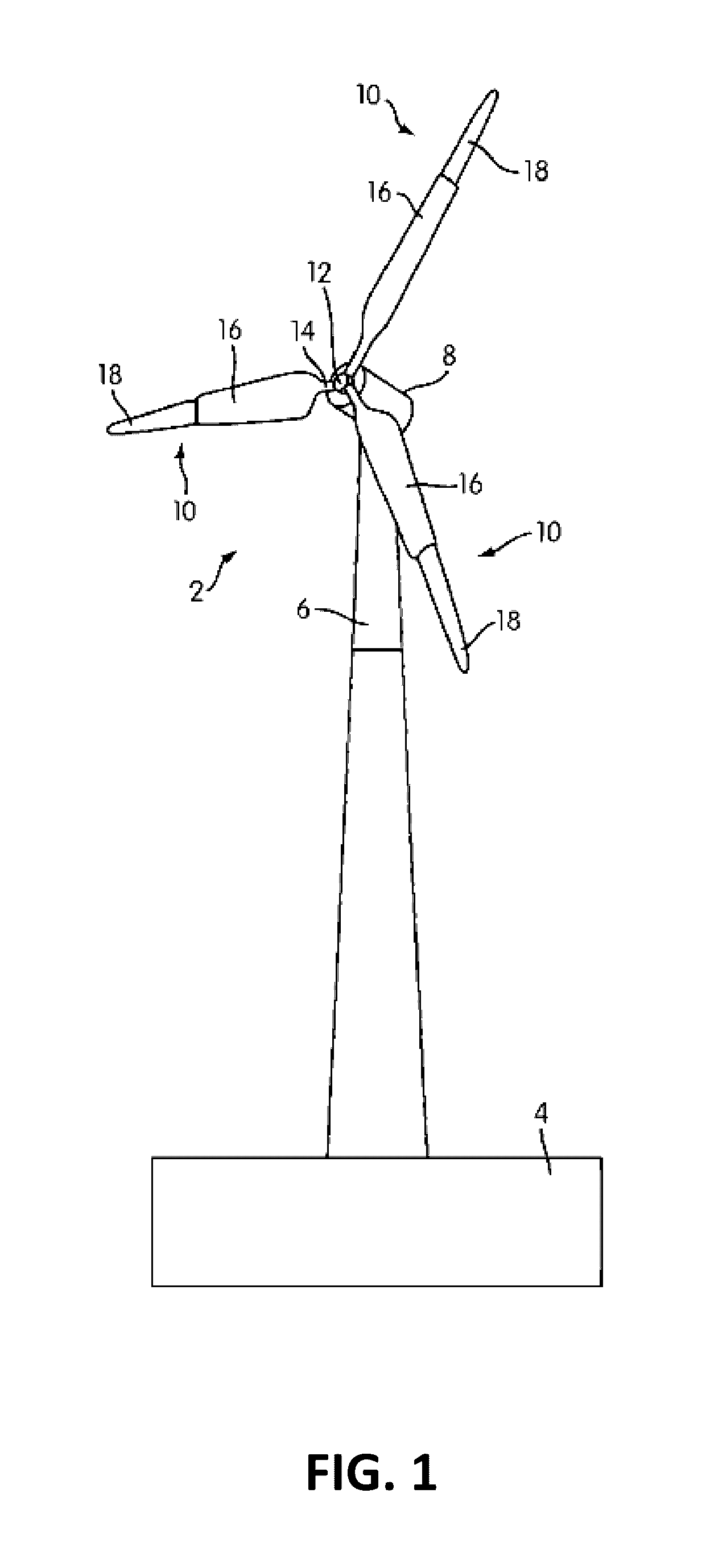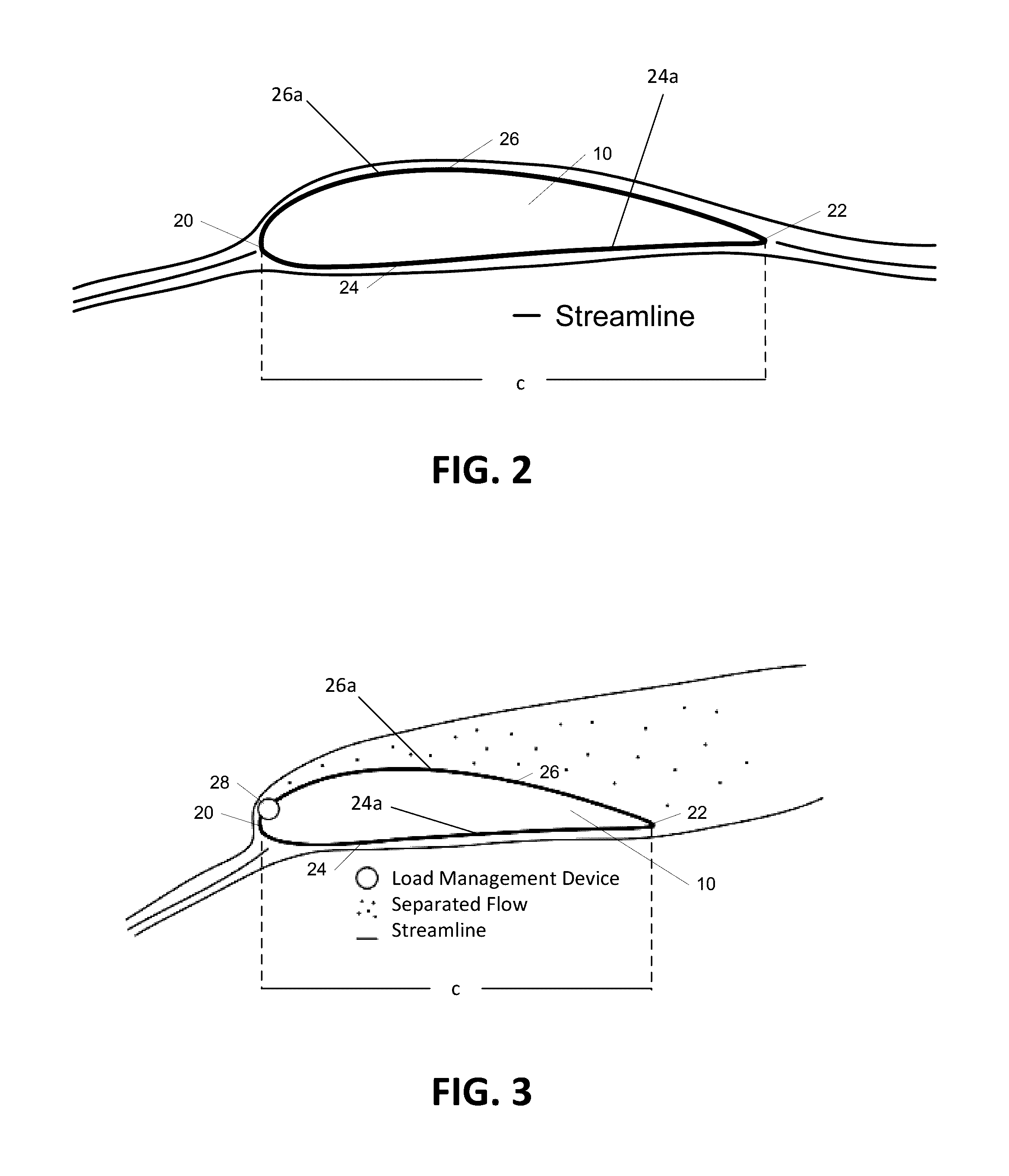Actuation of distributed load management devices on aerodynamic blades
a distributed load management and blade technology, applied in the direction of machines/engines, sustainable transportation, mechanical equipment, etc., can solve the problems of increasing the number of components, and increasing the number of situations, so as to reduce the duty cycle of load management devices and increase power
- Summary
- Abstract
- Description
- Claims
- Application Information
AI Technical Summary
Benefits of technology
Problems solved by technology
Method used
Image
Examples
Embodiment Construction
[0027]In the following description of the various embodiments, reference is made to the accompanying drawings, which form a part hereof, and in which is shown by way of illustration various embodiments in which the invention may be practiced. It is to be understood that other embodiments may be utilized and structural and functional modifications may be made without departing from the scope of the present invention.
[0028]Aspects of the present invention are directed to multiple load management devices disposed on a wind turbine and methods of actuating one or more of the load management devices in response to sensed operating conditions. In addition, aspects of the invention are directed to actuating less than all of the load management devices on a wind turbine blade, and actuation sequences used in determining which load management devices to actuate.
[0029]FIG. 1 shows a wind turbine 2 on a foundation 4 with a tower 6 supporting a nacelle 8. One or more blades 10 are attached to a...
PUM
 Login to View More
Login to View More Abstract
Description
Claims
Application Information
 Login to View More
Login to View More - R&D
- Intellectual Property
- Life Sciences
- Materials
- Tech Scout
- Unparalleled Data Quality
- Higher Quality Content
- 60% Fewer Hallucinations
Browse by: Latest US Patents, China's latest patents, Technical Efficacy Thesaurus, Application Domain, Technology Topic, Popular Technical Reports.
© 2025 PatSnap. All rights reserved.Legal|Privacy policy|Modern Slavery Act Transparency Statement|Sitemap|About US| Contact US: help@patsnap.com



